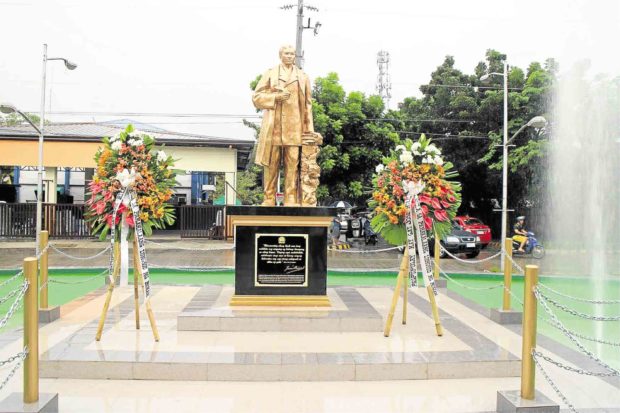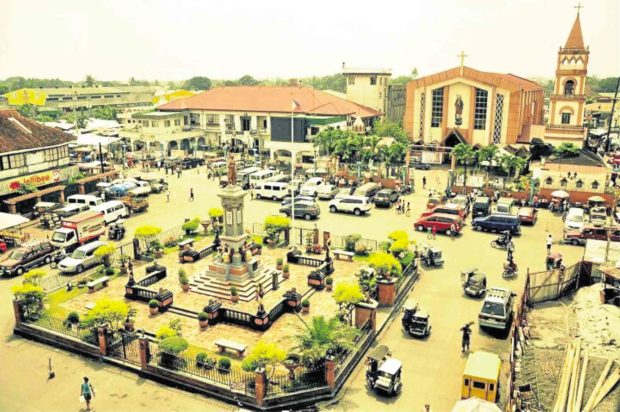Biñan embraces Rizal as its own

The newest statue of national hero Dr. Jose Rizal unveiled at the Biñan City Hall.
In the city of Biñan in Laguna province, another statue of Dr. Jose Rizal was put up recently to affirm the city’s historical connection to the national hero.
The newest 7-foot-tall stone sculpture was unveiled across City Hall on Dec. 18 to remember the day the young Rizal left Biñan in 1871 after studying there for two years, said BJ Borja of the city’s culture, history, arts and tourism office.
The city government, however, failed to find any record of the Biñan school where Rizal got his first formal education.
From 1869 to 1871, Rizal attended classes under Justiniano Aquino Cruz in a hut, which the Biñan City government preserved as a local historical site.
Historian Ambeth Ocampo wrote that Rizal’s brother Paciano took Rizal to Biñan (although Ocampo said it was in 1870), the first time Rizal was separated from his family.
“Most people knew Rizal was from Calamba (City) because that was where he was born and we do not contest that,” Borja said.
“But as we say, of all places, why would he be taken to Biñan (if there wasn’t any connection at all)?” he said.
Rizal’s lineage finds its way to Biñan where his grandparents not only lived but also served as capitan de pueblo or the town mayor.
Accounts from the National Historical Commission of the Philippines (NHCP) and the Biñan government showed that Rizal’s grandfather, Juan Mercado, was the mayor of Biñan in 1808, 1813 and 1823; while his great grandfather, Francisco Mercado, who owned the largest herd of carabaos in Biñan, held the position in 1783.
On Rizal’s maternal lineage, his grandfather, Lorenzo Alberto Alonso, was Biñan mayor in 1844 and his great grandfather, Cipriano Alonso, in 1790 and 1802.
Struck by lightning
It was only after Rizal’s parents, Francisco Mercado Rizal and Teodora Alonso Realonda, were married that the family moved to Calamba City, also in Laguna, Borja said.
There, about 15 kilometers away from Biñan, stands the Rizal ancestral home where national leaders in recent years commemorate the hero’s birth anniversary every June 19.
But for so many years, Biñan quietly pays homage to the national hero.
At the center of the old Biñan plaza is the 1918 Rizal monument believed to be a work of National Artist Guillermo Tolentino.
It follows the elaborate design entitled “Al Martir de Bagumbayan,” which won top prize in an international art contest held between 1905 and 1907.
But as if it was nature working its way, a lightning struck the monument in September 2015. The lightning bolt hit the 7-foot-tall Rizal statue and decapitated the hero’s likeness.

Biñan’s plaza is home to the 1918 Rizal monument. —PHOTOS COURTESY OF BIÑAN CULTURE, HISTORY, ARTS AND TOURISM OFFICE
Biñan’s son
The city government kept what was left of the statue and, in 2016, erected a replica still at the city plaza.
Two years after the lightning strike, the blasted statue was restored, partly using the original materials, by artist Frederic Caedo. This statue was put up at the City Hall.
Borja said they asked the National Commission for Culture and the Arts to declare the plaza’s Rizal monument an “important cultural property” in time for its centennial in May.
Now with two Rizal statues, he said these were reminders of how Biñan played a significant role in history.
“We take pride and draw inspiration from Rizal. After all, he is a son of Biñan,” Borja said.